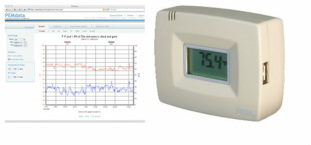Webinar Series 2: Environmental Monitoring and Control
|
Museums, libraries, and archives have long been without adequate tools and procedures for assessing and managing collection storage and display environments. Grant funds will be used to purchase environmental monitors to assist organizations lacking these critical tools. The Image Permanence Institute (IPI) has developed and tested the PEM2 Monitor, which is an innovative tool for environmental monitoring and data analysis. Workshop also includes training with the PEM2 Environmental Monitors which will be lent out to participants who request the equipment.
*In order to be eligible to receive one of the PEM2 Environmental Monitors, a participant MUST attend all 4 of the webinars in this series. |

